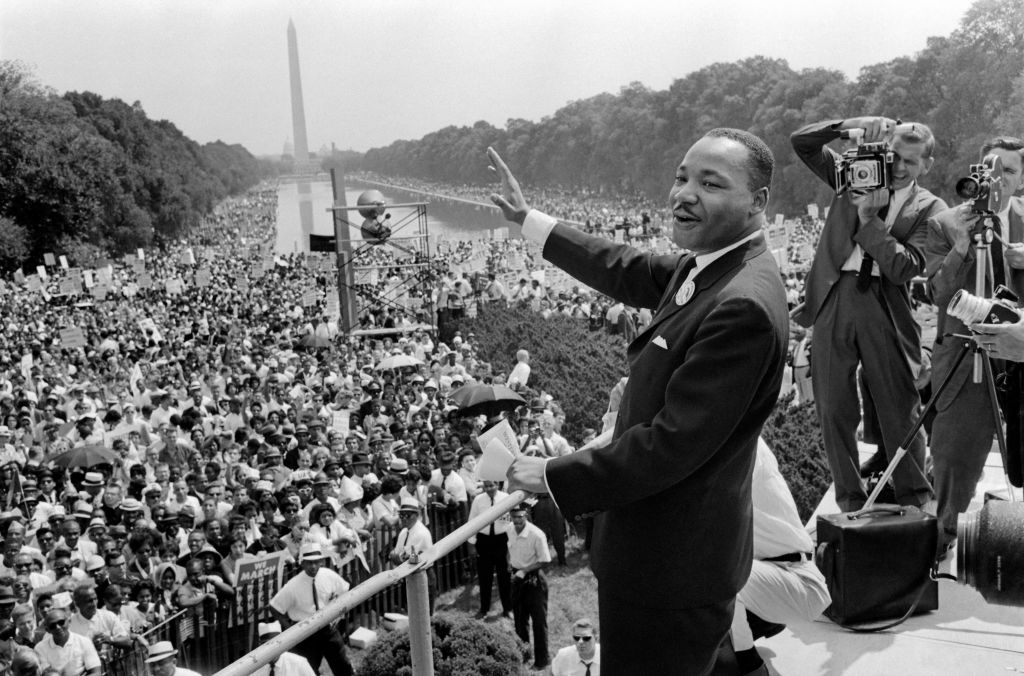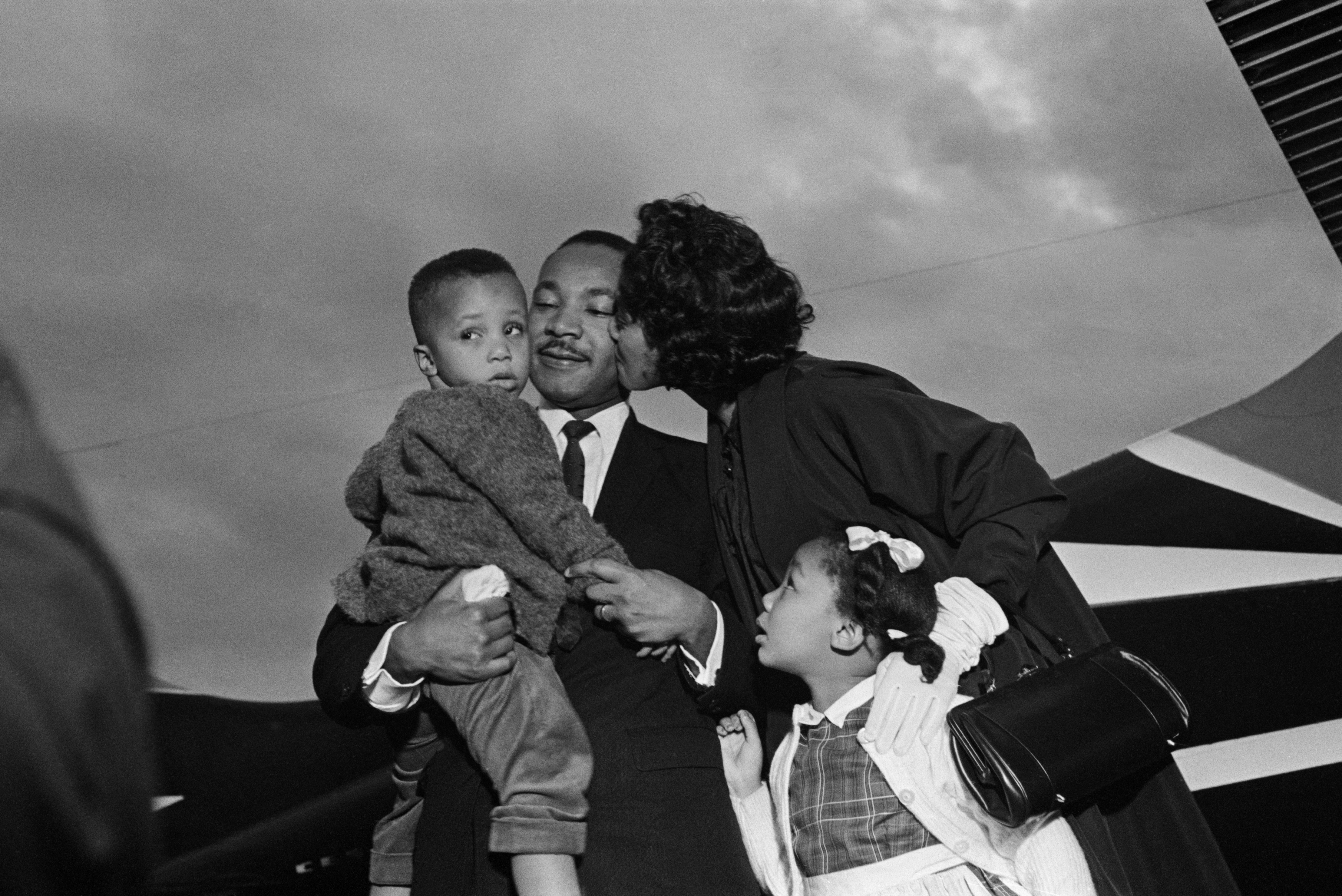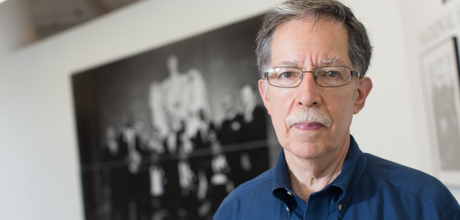On Aug. 28, 1963—exactly 60 years ago on Monday, more than 250,000 people showed up in the nation’s capital to participate in the March on Washington for Jobs and Freedom, which became a pivotal moment in the civil rights movement. While the day is most remembered for the Rev. Martin Luther King Jr.’s “I have a dream” speech at the steps of the Lincoln Memorial, the March on Washington built critical momentum for legislation such as the Civil Rights Act of 1964 and Voting Rights Act of 1965 to pass.
It's a day that lives in American lore as a shining example of what can happen when the masses come together to advance a cause, and George Washington University double alumnus Paul Kendrick, B.A. ’05, M.P.A. ’07, couldn’t believe he attended school just a 15-minute walk from the setting.
“It's an amazing thing for GW students to live so close to the place where this history happened,” said Kendrick, who received the Martin Luther King award for service while at GW.
“Take a morning or evening walk over and then reflect on changes you want to make in the world and see this example of how it is possible and see how when we can ground a vision for the future in American ideals and in our history, as we seek to live up to it.”
Kendrick has since gone on to become an acclaimed writer, speaker, educator and political leader who served in the Obama White House. Along with his father, he co-authored the 2021 book, “Nine Days: The Race to Save Martin Luther King’s Life and Win the 1960 Election.”
Kendrick spoke with GW Today about the March on Washington and its impact 60 years later.
Q: Leaders and demonstrators came together under the banner of jobs and freedom. What were the goals of the March on Washington, and why is it still so remembered?
A: We sometimes all struggle with how to make national change, how to advance and unlock issues and how to move hearts and minds so that politicians will follow. The March on Washington is an example I think we should always keep drawing on in what they did. They were really trying to move civil rights legislation, but there were also long-standing goals, both in economic and racial justice, that had driven the years of organizing that went into it. The March on Washington is an incredible example of both the hard work of organizing as A. Philip Randolph, Bayard Rustin and other leaders had worked on for years, and then inspiration in rhetoric, as Dr. King’s majestic moment of inspiration of “I have a dream” that we all remember. It’s a combination of those things that made it a protest that really changed America and built more support for the civil rights agenda, and it’s the ideal that we all keep going back to. So many causes have used this as a model and know there’s something powerful about going to Washington and organizing together and making demands to government for change. There is such power in being able to organize, connect people to purpose and to speak out.
Q: What did the March on Washington accomplish, and what was its impact in the march toward equality during the 1960s?
A: To understand the power of the March on Washington, we have to go back to a world that is kind of unfamiliar for us and remember a couple of things. One is that there had never been a march of the size of predominantly African Americans. There was so much racist fear of what could happen that organizers knew they had to nail this. Also, John F. Kennedy had never actually seen Martin Luther King speak in an oratory setting. He’s watching this on TV at the White House like other Americans and is certainly impressed. The civil rights leaders come to the White House afterward, and Kennedy is feeling much better about pushing civil rights. That’s important because, in the first couple of years of his administration, civil rights proponents were frustrated by the president not putting his weight behind the cause, which of course was very controversial to unpopular through a lot of the country. But a moment like the March on Washington, as well as the Birmingham Campaign in 1963, heightened Americans’ understanding, whether they were in opposition or just oblivious to the injustices going on, that this was a crisis. King and the civil rights leaders did a masterful job of moving their issue up on the agenda with a real focus on persuading people and drawing them into a movement against racism.
Q: Why has “I have a dream” withstood the test of time and remembered today as one of the most important oratorical moments in our nation’s history?
A: “I have a dream” is such a brilliant piece of rhetoric that inspired people and became part of the American creed as an ideal that we're all always seeking to make real in our country. It paints a picture and calls us in to imagine a world of equality. He knew he had to inspire people to get behind the legislation and other changes in America.
Q: This has been debated by historians for 60 years. Was the “I have a dream” line off the cuff and unscripted?
A: It was not in his prepared remarks—but he had given this “I have a dream” riff before, most prominently in Detroit a couple months before in a major speech. So, he had this frame in his oratorical arsenal, as great clergy members often have contractions to draw on. What is amazing about the speech is that King did make this departure midway through as he wanted to take things up emotionally, and he had this incredible instinct that it was the right place to do so at such a high stakes moment. It really is one of the most important pieces of rhetoric in world history, and it’s amazing that it could have not happened if he had not improvised that shift out of more formal language into something so clear and moving.
Q: As time has gone on, it seems that people have taken the opportunity to cherry pick a few lines from the “I have a dream” speech to essentially claim that King and other leaders that day were asking for a color-blind society. That is far from the truth, isn’t it?
A: I really urge everyone to go back and read King’s speech in its entirety, as well as other speeches from that day. This was a march for jobs and freedom. The day was full of economic demands. A. Philip Randolph, the lead organizer, had come from a career in organized labor. King talks about things like police brutality, voting rights, housing segregation and different issues that we are still struggling with today in order to make freedom real for everyone every day in their lived experiences. It is always important to go read Dr. King’s full words and not to take them out of context to dismiss civil rights demands today.
Q: How should we use Dr. King’s words and the legacy of the March in general to confront the injustices and inequalities of today?
A: The 60-year anniversary is a chance to go back to some of the texts from that day and see that there are a lot of similarities in the inequalities that persist. We would all be wise to draw on these deeply American symbols and the ideals of our country to call on everyone, including policymakers in Washington, to do what is needed to do to make King’s Beloved Community a reality.
Q: What can current George Washington University students, who now attend a school just north on 23rd Street from the Lincoln Memorial, take from the March on Washington in 1963?
A: There were so many unsung heroes of the march, and there are so many ways to advance good causes. The march is also a great example of interracial, intergenerational and interfaith collaboration across causes. One important lesson for GW students is to remember the youngest speaker, John Lewis, was 23 years old. Lewis’ role in the civil rights movement and being a speaker that day, on stage with Dr. King, is a reminder of the power and potential young people have to change the world. So many GW students get involved in different movements and ways to effect change, and the Lewis example in the march itself, and even King himself was only 34, is a reminder that we don’t need to wait to make change. And certainly at GW, you can jump right in and organize for the better world you seek.





